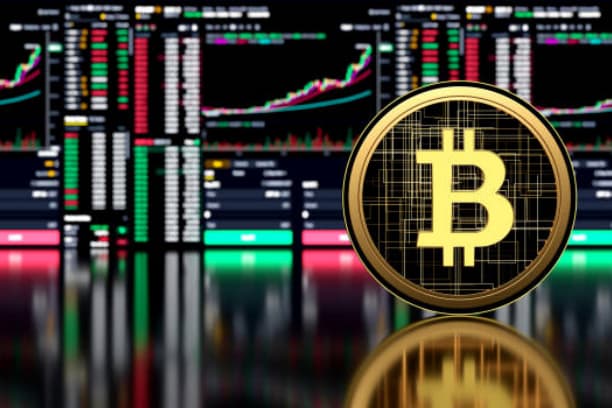The cryptocurrency market, and Bitcoin in particular, has often seen volatile changes as interest rate hike cycles have come and gone. Since the inception of Bitcoin in 2009, major central banks around the world have implemented multiple rounds of interest rate hikes, which have had a profound impact on Bitcoin's price and market sentiment. In this article, we will delve into the specific impact of different interest rate hike cycles on Bitcoin between 2009 and 2025 to help investors better understand the relationship between interest rate hikes and Bitcoin price volatility.

The Fundamental Impact of Interest Rate Hikes on the Bitcoin Market
The immediate impact of an interest rate hike is to raise the cost of capital in the market, which is a depressing factor for most risky assets. As a risky investment asset, Bitcoin's price is naturally affected by market liquidity, the cost of capital and investor sentiment. As a result, interest rate hike cycles often impact Bitcoin's price volatility in the following ways:
- Rising cost of funds in the market: when central banks raise interest rates, the cost of borrowing increases and investors are more inclined to move to lower-risk assets, resulting in higher-risk assets (e.g., Bitcoin) experiencing outflows.
- Changes in investor sentiment: interest rate hikes can affect investors' risk appetite, and some investors may choose to reduce their allocation to risky assets such as bitcoin due to market uncertainty.
- Tightening of liquidity: interest rate hikes are usually accompanied by a tightening of liquidity and a reduction in the amount of money available for investment in the market, a change that is especially noticeable for a niche market like Bitcoin.
2009 to 2015: initial rate hikes and bitcoin's response
When Bitcoin was created in 2009, interest rate hikes by central banks around the world did not have a significant impact on it, as it was still in its very early stages of development. Over time, the market realized the potential of bitcoin as a new asset and it began to receive attention from some investors.
- 2009-2015: low central bank interest rate policy: During this period, major central banks around the world implemented a prolonged low interest rate policy and did not engage in large-scale interest rate hikes, so Bitcoin's price instead benefited from abundant liquidity.
- Initial volatility: due to the immaturity of the Bitcoin market and price volatility, changes in interest rate hikes during this period did not have a clear trending effect on the Bitcoin price.
2016 to 2020: the pressure of the rate hike cycle and the bitcoin rally
After entering 2016, the global economy gradually recovered and some central banks began to gradually tighten their monetary policies. In the United States, the Federal Reserve Bank began to raise interest rates from the end of 2015, and market expectations of interest rate hikes gradually increased.
- 2016-2018: the initial impact of the Fed's interest rate hike: during this period, the price of Bitcoin experienced dramatic volatility. While the Fed's rate hike brought short-term capital outflows, Bitcoin still saw a strong rally as the Bitcoin market matured further and global investors recognized its safe-haven function.
- 2019-2020: Bitcoin's safe-haven asset attributes emerge: against the backdrop of the Fed's continued interest rate hikes, Bitcoin's safe-haven properties are gradually being recognized, especially in the context of increased global economic uncertainty, and Bitcoin is seen as an effective tool for anti-inflation and currency devaluation.
2021 to 2025: continued rate hikes and bitcoin volatility
As we enter 2021, the global economy is facing greater challenges due to epidemics and inflationary pressures, and several central banks have initiated a cycle of interest rate hikes. Bitcoin's performance began to correlate closely with macroeconomic policies, especially against the backdrop of a gradual recovery of the global economy and a gradual tightening of liquidity.
- 2021-2023: Negative correlation between interest rate hikes and bitcoin price strengthens: as the pace of interest rate hikes by the Federal Reserve accelerates, the price of bitcoin shows some downward pressure, and market capital shifts to more stable investment vehicles. However, Bitcoin has remained resilient, partly because its safe-haven attribute as "digital gold" has been re-recognized by investors.
- 2024-2025: Bitcoin Adjustment and Rebound in a Rate Hike Cycle: The Bitcoin market may see new investment opportunities after the end of the rate hike cycle. Bitcoin is likely to continue to be favored by capital in the long term due to the continued recovery of the global economy and the gradual restoration of liquidity in financial markets.
How to deal with bitcoin market volatility in a rate hike cycle?
During the rate hike cycle, bitcoin investors should maintain some awareness of risk and be flexible in adjusting their investment strategies. Here are a few key recommendations:
- Diversification Risk: Investors should avoid concentrating all of their money in a single asset during an interest rate hike cycle. Risk can be reduced by diversifying into bitcoin and other traditional financial assets.
- Pay attention to fund liquidity: pay close attention to the central bank's interest rate hike dynamics, and keep abreast of changes in market fund flows, especially in the early stage of the hike, investors should pay attention to the risk of capital outflow.
- Focus on macroeconomic data: understand the global economic situation, especially key indicators such as inflation and employment rates, in order to better predict the likelihood of interest rate hikes and their impact on Bitcoin.
wrap-up
From 2009 to 2025, Bitcoin has gone through multiple rate hike cycles, and each cycle has had a different impact on Bitcoin. Overall, interest rate hikes increase market uncertainty and put some pressure on the price of risky assets such as Bitcoin. Bitcoin, as a special asset with strong resilience and risk aversion, still has the potential to gain investor favor in rate hike cycles in the long run. For investors, understanding the relationship between interest rate hikes and the bitcoin market and adjusting their investment strategies can better prepare them for future market changes.







